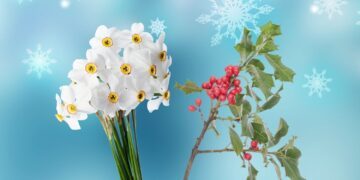
National Hat Day | January 15
In 1797, John Hetherington's top hat caused chaos in London, leading to fainting women and a boy breaking his arm.
Pulling crackers on Christmas, trick-or-treating on Halloween, or giving roses on Valentine’s Day are all traditions passed down through the ages, but why do we do these strange things?
Why do we celebrate things like Easter or St. Patrick’s Day? And why on earth do crazy holidays like Put A Pillow on Your Fridge Day even exist?
Here you’ll find facts about your favorite holidays and events, as well as funny holidays you’ve never even heard about.

In 1797, John Hetherington's top hat caused chaos in London, leading to fainting women and a boy breaking his arm.

In 2023, about 15 percent of adults in the United States, or roughly 39 million people, committed to participating in Dry January.

The oldest recorded New Year's resolution is from 1671, when author Anne Halkett committed to self-improvement in her diary.

The United States declared Christmas a federal holiday on June 26, 1870, marking a shift toward widespread festive celebrations.

Full moons aligning with the winter solstice are incredibly rare events. The last one occurred in 2010, and the next is in 2094!

Ancient Egyptians were the pioneers of hard candy, creating honey-based treats filled with nuts and fruit for extra flavor.

Winter is the cheapest season to buy a house, often presenting lower prices and less competition for buyers.

Catholics celebrate December 8 around the world, but the Day of the Little Candles, on December 7, is unique to Colombia.

All parts of the narcissus flower are toxic to humans and animals, as they contain a compound called lycorine.

For Black Friday, some retailers inflate reference prices before applying discounts, making deals seem bigger than they are.

Red Planet Day is celebrated every year on November 28 and honors NASA's Mariner 4 mission, the first successful flyby of Mars.

Stuffing was first recorded in an ancient Roman cookbook, Apicius de re Coquinaria, published around the 1st Century AD.